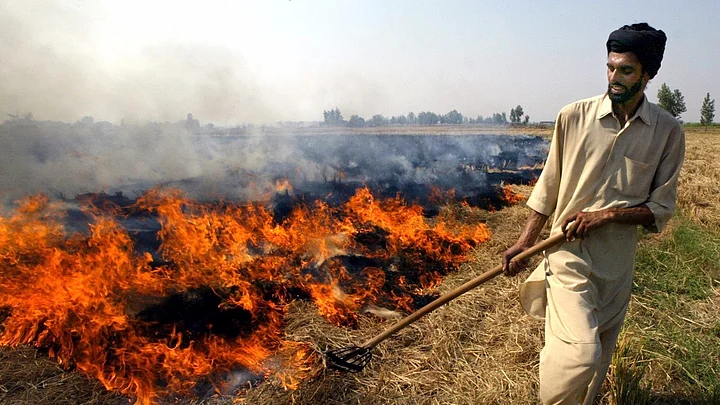Air pollution harms our babies and rots our organs, bones and mind. It can have a potential lethal effect. The research on its ecological impact is creating knowledge, public demand and political will for implementing changes required to combat it. However, unless the attitude towards solving such problems changes, India will continue to struggle with air pollution.
While India leads in the number of cities adversely affected by the air pollution problem, it is not alone. London, Beijing and Karachi are some other cities trying to deal with the issue of air pollution.
Combating air pollution is not impossible. United States has halved their deaths due to air pollution since 1990. This time period coincides with their legislative and regulatory reforms in the approach towards the problem.
While India cannot transpose the US reforms and expect to solve its own problem, it is desirable to understand the context and learn from their experience. However, basic understanding of the situation in India would be a critical prerequisite to performing such an exercise.
What Are the Current Mechanisms to Deal With Air Pollution in India?

The current arrangement to deal with the issue of air pollution in India follows a typical top-down approach. The two laws which affect the level of air pollution and their effects in India are the Air (Prevention and Control of Pollution) Act, 1981 and the Environment (Protection) Act, 1986 (EPA). EPA was enacted to prevent instances such as the Bhopal Gas Tragedy of 1986.
The Central Pollution Control Board (CPCB) and the State Pollution Control Boards (SPCBs) were created and were given powers.
CPCB can advise the central government as well as formulate its own programmes to deal with the issue of air pollution and execute them.
EPA empowers the central government to “take all such measures as it deems necessary for the purpose of protecting and improving the quality of the environment and preventing controlling and abating environmental pollution.”
Both these laws enable enactment of delegated legislation. CPCB has introduced many programs to deal with this problem in the past. The National Clean Air Programme is the recent development in this area. However, experts deem it to need modifications to be effective.
Apart from the laws which deal with the effect of pollution on air quality, setting up the National Green Tribunal (NGT) has also had an impact. The purpose of this tribunal is to expedite the cases related to environmental protection, which can also be heard by various high courts as well as the Supreme Court.
Lastly, there are emergency measures. Examples of such measures include emergency plans activated in Delhi this October or making special arrangements for Delhi Marathon, and banning of crackers during Diwali, coal power plants, or stubble burning. These measures are localised and short-term in nature.

What Is Required?
Air pollution is a distinct problem because of many sources which can cause it. Before looking into the measures to be adopted or enforcing emergency provisions, a clear understanding of underlying issues causing air pollution in the area is essential.
Trying to solve issues on a standalone basis, without addressing the root of the problem can lead to wastage of resources and time. For example, despite many efforts to provide subsidised crop residue removal using machines instead of stubble burning, the idea hasn’t picked up. Reports have pointed to lack of understanding of incentives as a reason of failure of such schemes.
India is a unique country with its own challenges. However, it is also a developing country with limited resources to deal with public health issues. In these circumstances, it is useful to look outside and learn from other jurisdictions.
While the US adopted a legislative route to fixing the sovereign rights as well as liabilities towards air pollution, China introduced an Action Plan for Air Pollution Prevention and Control by the government. The learning from effects of these programs can create informed decisions for India.

Multi-pronged Strategy for a Systemic Failure
The air pollution problem in India is an old and systemic failure. So, the solution cannot be made in silos. The approach required for the issue should be based the linkages and interactions between the elements in the system. It helps clarify the causes of problems, identify the options available to us and extend foresight into the consequences of choosing our options.
The strategy for abatement of the problem should be informed by source apportionment and monitoring.
Agencies responsible for this role should have resources required for these activities and then need to be made accountable to the public.
- Innovations like air pollution prediction system with capacity of change need to be encouraged and adopted.
- Urban planning should be mindful to future pollution generation levels.
- Legislation should take into consideration the inter-state nature of air pollution problem and provide accountability to local, state as well as national level authorities.
- Enforcement should be strict and should work to provide disincentives to polluting activities. Currently, enforcement is not equivalent to the pollution generated because of lack of monitoring capabilities. For example, the South Delhi Municipal Corporation fined large, measurable activities like construction to an amount much larger than offenses like burning of garbage.
- The designed solutions need to be mindful of state’s capacity. Last year, the SC order banning firecrackers last Diwali could not be enforced because lack of state capacity.
Lastly, these measures need to work at local, state as well as inter-state level in a coordinated manner for long term and sustainable change.
(The author is a researcher at the National Institute of Public Finance and Policy, New Delhi. She is an advocate and specialises in public health. This is an opinion piece and the views expressed above are the author’s own. FIT neither endorses nor is responsible for the same. )
(At The Quint, we are answerable only to our audience. Play an active role in shaping our journalism by becoming a member. Because the truth is worth it.)
